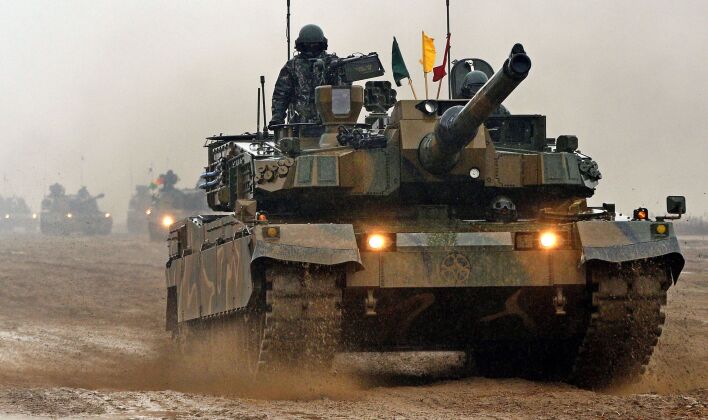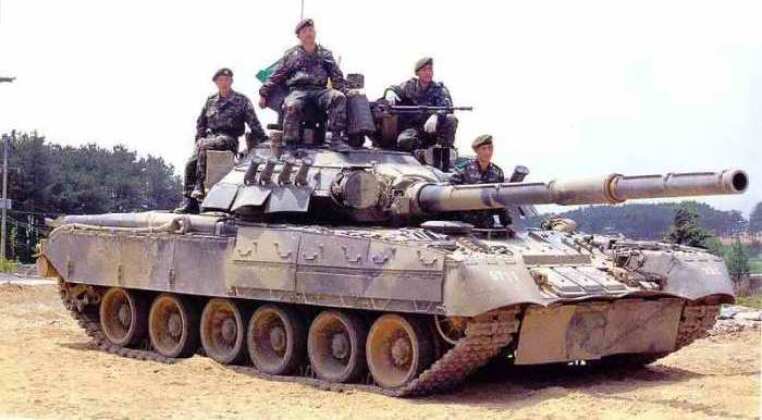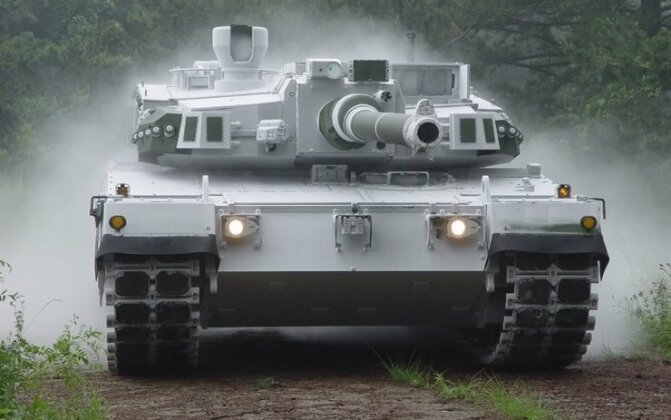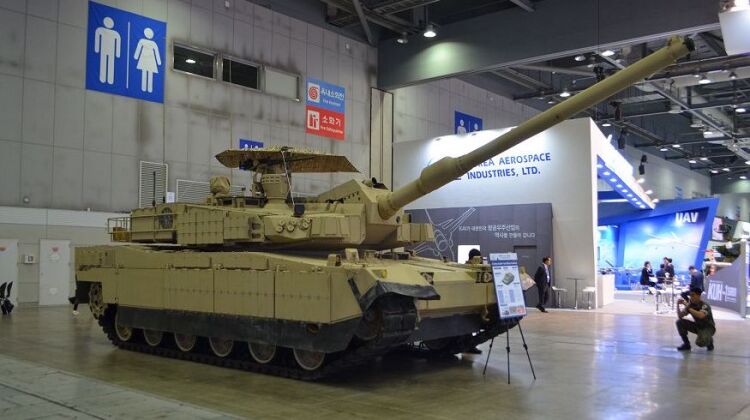South Korea has increasingly emerged in the post Cold War years as one of the world’s leading producers of NATO-compatible armaments, and among U.S. allies has consistently produced highly competitive products ranging from its Sejong the Great Class destroyer, which is considered the most capable to use the American AEGIS system, to its K9 artillery system which has been popular in Europe. As a major defence spender South Korea’s domestic armaments industry has reduced its reliance on imported arms, and benefitted from considerable economies of sale from contracts supplying the country’s own armed forces. As the country’s domestic civilian industries increasingly emerged as world leaders from the 1980s, mega corporations such as Samsung, Daewoo and Hyundai became increasingly capable of providing for the military and substituting products previously imported primarily from Western countries. With a next generation stealth fighter currently under development South Korea has gained a degree of self sufficiency in its military industries which very few other modern militaries can rival.

A major landmark in the rise of South Korea’s defence sector was the development of the country’s first fully indigenous battle tank, which began development in the mid-1990s with the design finalised in 2006. Several subsequent modifications and delays meant that the K2 would only enter production in 2014, with the Hyundai Rotem corporation was commissioned to produce the tanks. The K2 followed on from the late Cold War era K1, which first entered service in 1987 and was heavily based on the American M1A1 Abrams that had joined the U.S. Army seven years prior. The K1 not only had not been an indigenous design, but was also a below average performer particularly due to its reliance on a relatively tiny 105mm main gun. The K2 on the other hand incorporated reverse engineered elements of some of the world’s most potent tank designs and combined them with domestic innovations ranging from the French Leclerc’s fire control system, the Russian T-80’s snorkel capabilities allowing it to ford rivers up to 4.2 meters deep, and the 120 millimetre L55 gun from Germany’s Rheinmetall – but with a lengthened barrel for greater muzzle velocity. The tank also made use of an autoloader, reducing crew requirements by 25 percent from four to three compared to competing Western designs and providing a much higher rate of fire of ten rounds per minute. Before the K2’s entry into service the Russian T-80U tank had been considered the most capable in South Korean service, and had notably also made use of an autoloader.

Some notable indigenous features of the K2 include advanced hydropneumatic suspension, which allows the tank to more effectively conceal itself in defensive positions, as well as a unique application of an integrated millimetre band radar to predict uneven terrain which is particularly valuable in Korea’s mountainous environment. An advanced laser warning system serves to turn its turret towards sources of hostile fire extremely quickly, thus allowing it to return fire in shorter time and increase survivability. The K2 is designed to fire the indigenous KSTAM munitions that allow the tank to effectively act an artillery piece with a very long eight kilometre firing range. The tank was also initially planned to integrate an unmanned turret similar to that of the Russian T-14 Armata, but the complexity of developing and installing such a system led to its abandonment which has negatively impacted crew protection and increased the vehicle’s weight. The T-14, which is considered the K2’s only rival for the title of the world’s most capable tank, is currently the only one with such a turret.

The K2’s fire control system is linked to a high frequency radar deployed on the frontal arc of its turret, which complementary crosswind sensors and laser rangefinders also deployed. The tank is also capable of making use of a thermographic camera to enter a ‘lock on’ mode and track specific targets at ranges of 9.8km, which allows crew to fire more accurately and even engage low flying enemy aircraft. To enhance the tank’s survivability the K2 makes use of advanced composite armour and both explosive and non explosive reactive armour, and integrates a millimetre band radar system capable of operating as a Missile Approach Warning System. This complements the K2 computer’s ability to triangulate incoming projectiles and fire visual and infrared screening smoke grenades to block the tank’s visual and infrared signatures. The K2 is also prized for its high mobility, and one of the fastest tanks in the world able to reach 70km/h speeds.

At $8.5 million each the K2 is among the most expensive tank in production globally, but has nevertheless gained considerable foreign interest from the Middle East and Europe with Turkey set to produce a modified derivative under license, the Atlay, following the poor performance of its German made Leopard II tanks in Iraq and Syria. The rise of South Korea as a major defence producer could potentially lead to the sidelining of Western producers in their traditional markets, such as Turkey, the Philippines and Indonesia which have acquired large quantities of South Korean weapons, as well as in South Korea itself where American imports have been relegated to a shrinking market share. While the country’s KF-X stealth fighter seeks to complement rather than replace the American F-35, South Korea’s next fighter may well replace rather than work alongside future U.S. fighters. The same is very much true for the K2, which represents part of an end to South Korea’s longstanding heavy reliance on Western armaments for its ground forces. While China was previously the only major arms exporter in East Asia, particularly since the imposition of UN sanctions on North Korea’s formerly successful arms export industry, South Korea’s growing defence industry could lead Asia-Pacific nations to rely more on regionally produced weapons systems and less on Western and Russian imports as they traditionally have. This would have significant implications for Western arms industries, particularly those in the United States, for which the Asia-Pacific is its second most profitable region for arms sales.
